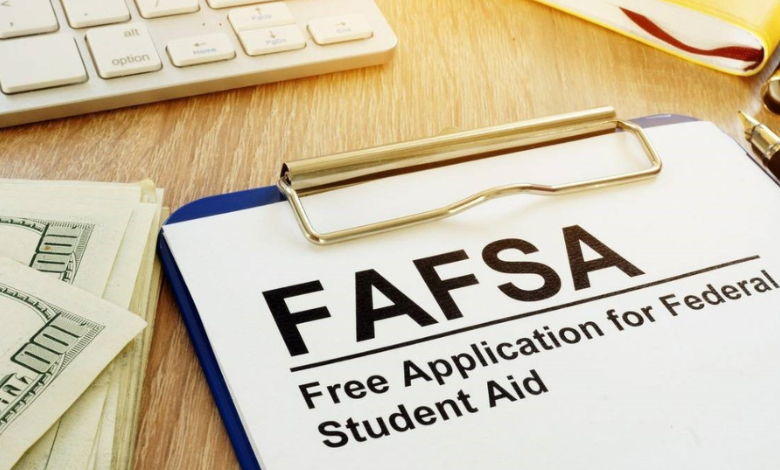What is FAFSA?

The Free Application for Federal Student Aid (FAFSA) is a form that students are required to fill out to determine your eligibility for any grant, loan or any financial aid. This aid can come from the federal government, state agencies, and educational institutions.
FAFSA is just an application form that contains all information such as Expected Family Contribution (EFC) and Student Aid Report (SAR) which is used to calculate how much aid you can receive.
Reminder: Some states might use FAFSA, others have their own application for grants state grants and scholarship. You can check out additional federal grants and state aid to maximize your funding.
What is Pell Grant?
A Pell Grant is a federal funded grant for undergraduate students with low income. Eligibility for Pell Grant is based on Expected Family Contribution (EFC), this means the amount awarded to you can vary from year to year. Pell Grant is available only for 12 semesters per student.
FAFSA vs. Pell Grant: Key Differences
FAFSA is a general application that you must fill in for Pell Grant, student loan or any financial aid. When it comes to financial aid there are many terms we get confused with, understanding these two terms can help you make an informed decision.
| Feature | FAFSA | Pell Grant |
| Definition | A form used to apply for financial aid | A federal grant awarded to low-income students |
| Purpose | Determines eligibility for various aid types | Provides financial aid that does not require repayment |
| Who Can Apply? | Any U.S. citizen, permanent resident, or eligible non-citizen attending college | Undergraduate students with demonstrated financial need |
| Is It Free Money? | No, FAFSA is just an application | Yes, Pell Grants do not require repayment |
| Financial Need Requirement | Not all FAFSA applicants qualify for need-based aid | Pell Grants are strictly need-based |
| Award Amount | No direct award, but helps determine aid eligibility | Varies each year, up to $7,395 in 2024-2025 |
| Application Process | Fill out FAFSA online every year | FAFSA application determines Pell Grant eligibility automatically |
How FAFSA and Pell Grant Work Together
Since Pell Grants are awarded based on financial need, completing the FAFSA is the only way to determine eligibility for a Pell Grant. Here’s how they work together:
- Fill Out FAFSA: Students submit their financial details through the FAFSA form.
- Financial Need Assessment: The government reviews the application and calculates the Expected Family Contribution (EFC) or Student Aid Index (SAI).
- Award Notification: If a student qualifies for a Pell Grant, they will be notified through their school’s financial aid award letter.
- Disbursement of Funds: If eligible, Pell Grant funds are sent directly to the college to cover tuition, fees, and, in some cases, living expenses.
Common Misconceptions

- FAFSA is a Grant or Loan
Many students mistakenly believe FAFSA itself provides money. FAFSA is just the application that determines eligibility for grants, loans, and work-study programs.
- Pell Grants Cover All College Costs
While Pell Grants provide essential financial support, they often do not cover the full cost of tuition and living expenses. Students may need additional financial aid, scholarships, or part-time work. Additionally, Pell Grants are awarded to those who showcase extreme financial need. If you don’t fall under certain criteria your application will be rejected.
- You Can Only Apply Once
FAFSA must be completed every year to continue receiving financial aid, including Pell Grants. If rejected due to any problem, you can again reapply FAFSA with proper documents so that you can avail financial aids.
Note: Always look out for the deadlines, it is best to apply as early as possible to maximize financial aid opportunities!
- Pell Grants Are Only for Public Colleges
Pell Grants can be used at most accredited institutions, including community colleges, public universities, and private colleges. You can fill FAFSA and apply for college at the same time, but you must mention the list college you are considering in FAFSA. Once accepted, the college will send you financial aid packages based on you FAFSA. You can choose which package is beneficial for you and confirm your enrollment in that college.
Other Types of Financial Aid FAFSA Helps With

Pell Grant covers tuition and course fees, housing, study supplies, transportation and other requirements that depends on each college. You can’t solely depend on Pell Grant for financial cover ups as it can depend based on Expected Family Contribution (EFC) and enrollment status (full-time vs. part-time). As Pell Grants are for undergraduate after graduation you won’t receive any financial aid. Besides Pell Grants, FAFSA helps determine eligibility for:
- Federal Student Loans: Subsidized and unsubsidized loans for students who need additional funding.
- Work-Study Programs: Opportunities for students to work part-time to help pay for college expenses.
- State and Institutional Grants: Many states and colleges use FAFSA to distribute need-based aid.
Apart from these try to apply for scholarships and state grants. You can consider work-study programs that will help you earn and gain experience simultaneously. Not everyone can receive Pell Grant but even if you are eligible, it will be in your best interest to apply for other financial aid programs to have a smooth sail without any financial burden.
Conclusion
FAFSA and Pell Grants are different but interconnected. FAFSA is the application that determines eligibility for multiple types of financial aid, including the Pell Grant, which is a need-based grant that does not require repayment. Understanding the differences between the two can help students maximize their financial aid opportunities and reduce the burden of college expenses.
For students planning to attend college, the best approach is to fill out the FAFSA as early as possible to see if they qualify for Pell Grants and other financial aid options.



